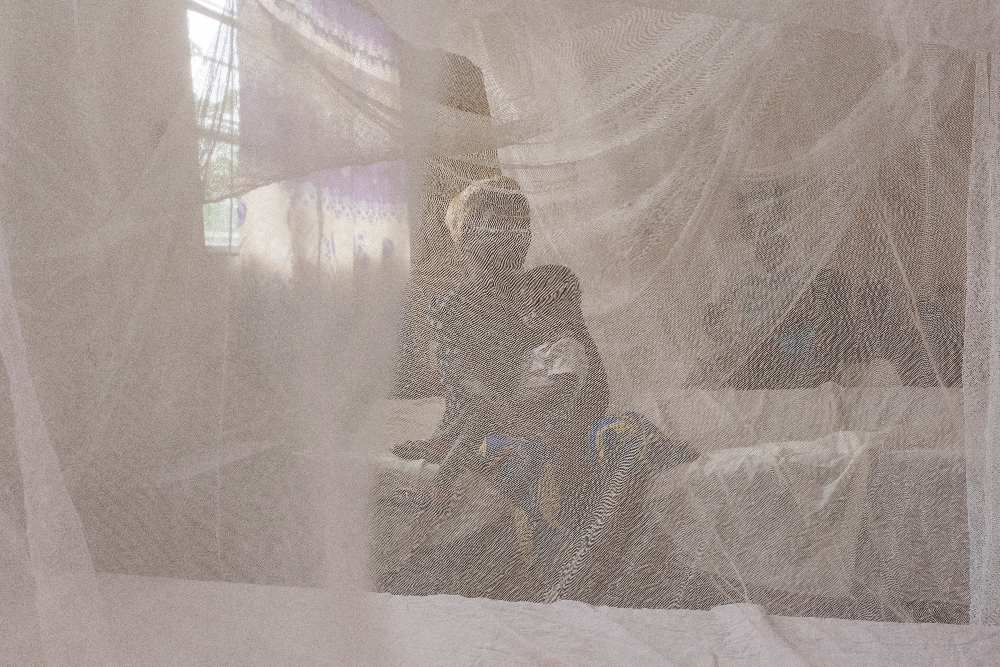Mbuji-Mayi (DR Congo) (AFP) – Claudine Kamwanya’s twins are barely two but have the ethereal look of the very old.
Wizened features and saucer-like eyes peer from their tiny emaciated faces.
“How can I satisfy their hunger?” Kamwanya, who has two other children and is pregnant with a fifth, asks helplessly. “My husband doesn’t work and I sell only water.”
Acute malnutrition stalks the diamond-rich but fragile Kasai region in the Democratic Republic of Congo (DRC) — the world’s worst-hit country in terms of food insecurity, according to the UN.
Worried for her infants, Kamwanya has sought help at a hospital in Bonzola near the town of Mbuji-Mayi.
In an adjoining room, Marie-Jose, a girl aged four and a half, is slowly recovering after 12 days of treatment — a recovery that delights the medical staff.
“She was brought here unconscious with severe dehydration associated with infections,” said a nurse.
Between April 14 and May 1, “29 malnourished children were admitted, including six in a very serious state,” said Dr. Gregoire Mpoyi, thanking a charity, Action Contre la Faim (ACF, Action Against Hunger), for its support.
– Alarm bells –
When the DRC makes the headlines internationally, it is typically for violence in its mineral-rich east, where more than 100 armed groups roam.
Less well known is its crisis of hunger, especially in the Kasai, the heart of a vast country that is the size of continental Western Europe.
Some 27.3 million people in the DRC are affected by food insecurity, the United Nations said in early April.
“This situation has made the DRC the country with the most number of people needing urgent food assistance in the world,” its Food and Agricultural Organization and the World Food Programme said, sounding the alarm.
In Mbuji-Mayi, about 15 children with skeletal bodies lie under a mosquito net in the pediatric ward of the general hospital, watched over by their impassive mothers.
“Four are in the phase of severe acute malnutrition (the most serious), five are in transition and six are in rehabilitation or are recovering,” said Pierre Kasongo, the head of this hospital run by nuns.
“Malnutrition is a scourge that is flourishing in our poverty-stricken community,” he said.
In three weeks, his hospital has treated over 60 children. The facility is one of 35 that is supported by ACF.
Mado Kapinga sits by the side of her little son, Ntumba Kabengela, who is slowly on the mend.
“When we came here, he was really suffering and very weak. He is better after three days’ treatment,” says Kapinga, a mother-of-five and the wife of an artisanal miner.
She dreads going home.
“Here they give us everything: food, water and even soap to wash ourselves. Once back at home, we will have nothing to eat and my son could have a relapse,” she says.
– The lure of diamonds –
The vast Kasai region is still recovering from fighting in 2016-2017 sparked by the death of a local chief, Kamuina Nsapu, by the DRC security forces.
An insurrection by his followers triggered a conflict that claimed 3,400 lives, left 1.5 million people internally displaced and prompted 35,000 others to flee to neighbouring Angola.
Kasai’s economy is in tatters, and few are willing to tend its dour clayey soil to grow crops.
Many more turn to informal mining in the hope of overnight riches, although it hardly works that way.
“People don’t work, they don’t want to farm. The overwhelming majority dream of making a fortune through diamonds, even though it’s obvious — you don’t just bend down and pick up diamonds,” says Carine Kupela, a nun who is the hospital’s general administrator.
The neighbouring province of Kasai-Central has also been hit by hunger.
Sitting on her mother’s lap, Jeannette Kabuma eats porridge distributed by a nurse to about 20 children at a hospital in Kananga, the provincial capital.
Aged one, Jeannette weighs only 5.4 kilograms (11.9 pounds) against the normal average of between seven and 11 for her age.
– Caterpillars and peanuts –
She is suffering from severe acute malnutrition, according to nurse Maman Denise.
The health centre in Kamayi had treated 74 children between October and March. Only 47 of them were declared cured.
Anto Kalonga, 23, arrives with three children. Two are pot-bellied and have brittle and yellowing hair — classic signs of malnutrition — while the third has trouble breathing.
“He doesn’t even have the strength to cry,” says Kalonga.
In health centres run by the UN children’s agency Unicef, mothers are taught how to make porridge with locally available produce such as maize, peanuts, palm oil and caterpillars.
“The moment a project stops, it’s back to square one,” says Elie Mayiza Bamvangila, a Unicef worker in Kanaga.
“The return of displaced people has become a burden for the community,” he adds.
On the outskirts of the city, more than 2,200 displaced families are sheltering in camps.
Since 2019, Vanessa Zawadi from an NGO called Women for Peace and Dignity employs mothers of malnourished children to work on farmland.
Every day, she said, she used to to buy one or two coffins to bury malnourished children.
“The parents wanted me to be like other organisations which hand out food… but I make them aware of the importance of growing food or fish farming.”
Source: New feed


